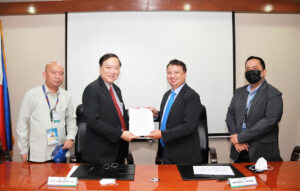THE Department of Information and Communications Technology (DICT) and the National Grid Corp. of the Philippines (NGCP) have signed a lease agreement covering the co-location of the National Broadband Program’s facilities within the NGCP’s right of way.
“What we signed today is the master lease agreement on the facilities, because we would definitely have to co-locate our facilities inside the NGCP infrastructure,” DICT Secretary Ivan John E. Uy said in an recorded statement provided by his office to reporters.
The NGCP is a privately owned corporation in charge of operating, maintaining, and developing the state-owned power grid.
Mr. Uy said the agreement is a major development in the national broadband plan, which will allow the government to “facilitate the two-terabyte connection that is coming in from our eastern seaboard.”
The national broadband plan is the DICT’s blueprint for accelerating the deployment of fiber optic cable and wireless technology to improve internet speeds.
According to the department, the NGCP’s private telecom network operates and maintains a telecom backbone supporting the operation of the electricity grid across the archipelago.
The DICT is working with Facebook and the Bases Conversion and Development Authority to complete the Luzon Bypass Infrastructure Project, a 240-kilometer fiber corridor connecting western and eastern modular information technology facilities.
“The two cable landing stations located in Baler and Poro Point will increase the total government capacity to 2,000,000 Megabits per second (Mbps), which is 50x the current government capacity of only 40,000 Mbps,” it said in a statement.
In his first address to Congress, President Ferdinand R. Marcos, Jr. said he has tasked the DICT to expand digital connectivity even to remote islands.
“This will be done through the implementation of the National Broadband Plan, the common tower program, connecting our geographically isolated and disadvantaged areas via our ‘Broad Band ng Masa’ project,” he said.
“All relevant modes of digital transport should be utilized. These may be through a combination of terrestrial or submarine fiber optics, wireless and even satellite technology,” the President added. — Arjay L. Balinbin
